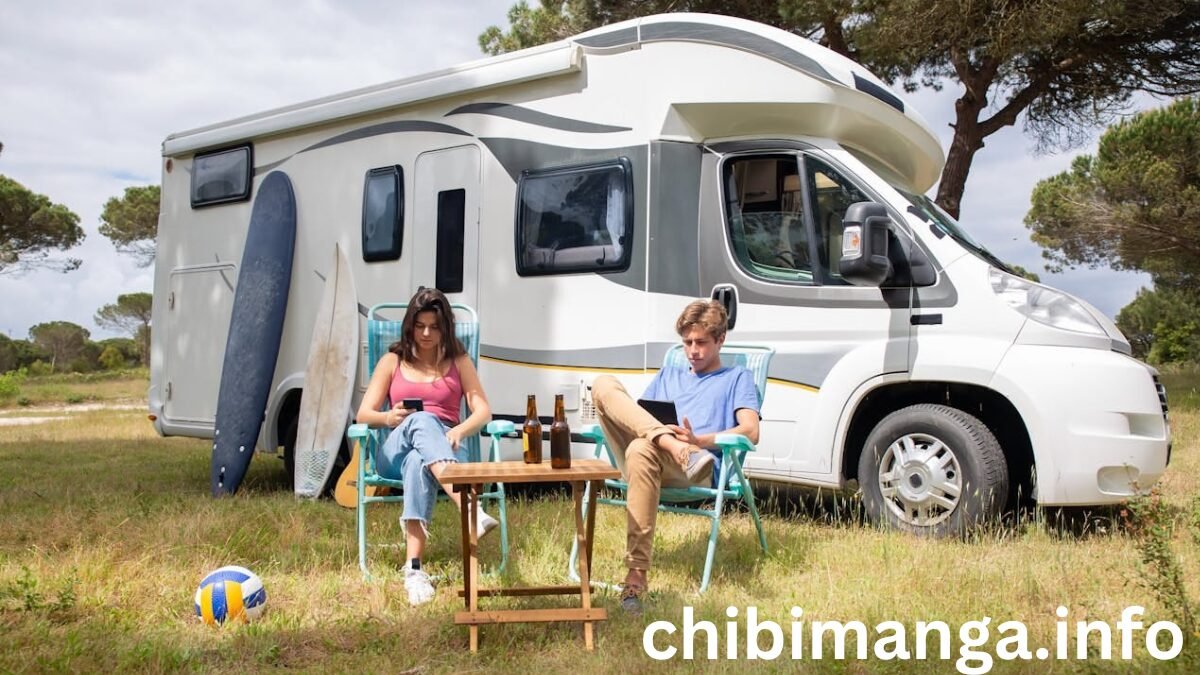Introduction
Adventuring into the great outdoors offers an unparalleled sense of freedom and excitement. Whether you’re exploring dense forests, arid deserts, towering mountains, or remote beaches, each environment presents its unique set of challenges. Being well-prepared with survival skills can mean the difference between an exhilarating adventure and a dangerous ordeal. This guide aims to equip adventurers with essential tips and tricks to survive and thrive in the wild.
Essential Gear
Before setting out on any adventure, it’s crucial to pack the right gear. Here’s a list of essential items every adventurer should carry, along with explanations for their importance:
First-Aid Kit
A well-stocked first-aid kit is a non-negotiable item for any adventurer. It should include bandages, antiseptic wipes, pain relievers, tweezers, and any personal medications. Accidents can happen anytime, and having the necessary supplies can help treat minor injuries and prevent infections.
Fire Starter
Fire is essential for warmth, cooking, and signaling for help. Carry waterproof matches, a lighter, or a fire starter kit. Practicing how to start a fire in various conditions is equally important, as wet or windy weather can make it challenging.
Navigation Tools
Always have a reliable map and compass. While GPS devices are useful, they can fail due to dead batteries or lack of signal. Knowing how to use a map and compass is a vital skill for any adventurer.
Shelter Materials
A lightweight tent, tarp, or emergency space blanket can provide crucial protection from the elements. In unexpected situations, having the means to create a shelter can keep you safe from extreme weather conditions.
Water Purification System
Access to clean water is essential. Carry water purification tablets, a portable water filter, or a UV purifier to ensure that any water you find is safe to drink. Dehydration can quickly become a serious issue in the wild.
Multi-tool
A good multi-tool can be a lifesaver in numerous situations. It can assist in building shelters, preparing food, making repairs, and more. Look for one with a knife, pliers, screwdriver, and other useful implements.
Signaling Devices
In case of emergency, signaling devices such as a whistle, mirror, or flare can attract the attention of rescuers. It’s also wise to carry a mobile phone with a fully charged battery or a satellite phone for areas without cell service.
Proper Clothing
Dress in layers and choose moisture-wicking, quick-drying fabrics. Depending on the environment, pack thermal wear, rain gear, and sturdy, comfortable hiking boots. Protecting yourself from the elements is crucial for maintaining your health and energy.
Building a Shelter
Knowing how to build a shelter is a fundamental survival skill. The type of shelter you construct will depend on the environment you’re in.
Forest Shelters
In forested areas, use fallen branches and leaves to create a lean-to or debris hut. Start by finding a sturdy branch to serve as the ridgepole. Lean smaller branches against one side, and cover them with leaves and other natural debris to insulate the shelter.
Desert Shelters
In the desert, protection from the sun is a priority. Construct a shade shelter by securing a tarp or space blanket between rocks or other anchor points. Digging a shallow trench and covering it with the tarp can also provide some relief from the heat.
Mountain Shelters
In mountainous regions, utilize natural formations like caves or overhangs for shelter. If none are available, build a windbreak using rocks and your tarp or space blanket. Snow can be used to build a snow cave, which offers insulation from the cold.
Step-by-Step Instructions
- Choose a Location: Find a spot that is flat, dry, and sheltered from the wind.
- Collect Materials: Gather branches, leaves, or rocks depending on the environment.
- Build the Frame: Use sturdy branches or rocks to create a framework for your shelter.
- Add Insulation: Cover the frame with leaves, moss, or snow to insulate and protect against the elements.
- Secure the Structure: Ensure your shelter is stable and can withstand wind and other environmental factors.
Finding Food and Water
Finding food and water is crucial for long-term survival. Here are some safe methods to ensure you have enough sustenance.
Identifying Edible Plants
Learn to identify edible plants in the area you plan to explore. Berries, nuts, and certain greens can provide necessary nutrients. However, it’s vital to know which plants are safe to eat and which are not. Some edible plants include dandelions, wild garlic, and cattails.
Hunting and Fishing
If you have the skills and equipment, hunting and fishing can provide protein-rich food. Small game like rabbits or squirrels, as well as fish from rivers and lakes, are viable options. Always follow local regulations and ensure humane and sustainable practices.
Water Sources
Locate fresh water sources such as streams, rivers, or lakes. In arid environments, look for signs of water like green vegetation or animal tracks. Once found, use your purification system to make the water safe to drink.
Purification Methods
- Boiling: Bring water to a rolling boil for at least one minute to kill pathogens.
- Filtration: Use a portable water filter to remove impurities.
- Chemical Purification: Add water purification tablets or drops and follow the instructions.
Firecraft
Starting a fire without matches or lighters can be challenging but is a vital skill. Here are some methods to get you started.
Friction Methods
- Bow Drill: Use a bow, spindle, and fireboard to create friction and generate an ember. Transfer the ember to a tinder bundle and blow gently to start a flame.
- Hand Drill: Similar to the bow drill but requires more effort. Spin a spindle between your hands on a fireboard to create an ember.
Spark-Based Methods
- Flint and Steel: Strike a piece of flint against steel to produce sparks. Catch the sparks on a piece of char cloth or dry tinder.
- Ferro Rod: Scrape a ferrocerium rod with a metal striker to produce hot sparks that ignite tinder.
Importance of Fire
Fire provides warmth, allows you to cook food, purifies water, and can be used to signal for help. Always build your fire in a safe, open area and keep it controlled to prevent wildfires.
Navigation
Understanding basic navigation techniques is essential for finding your way in the wild.
Using Natural Landmarks
Identify natural landmarks like mountains, rivers, or distinct rock formations to help orient yourself. Use these landmarks in conjunction with a map to determine your location.
Celestial Navigation
At night, use the stars to navigate. In the Northern Hemisphere, locate the North Star (Polaris) to find true north. During the day, the position of the sun can help you determine directions.
Map and Compass
- Map Reading: Learn to read topographic maps, which show terrain features and elevations.
- Using a Compass: Hold the compass flat and rotate the housing to align the orienting arrow with the magnetic needle. Use the directional arrow to find your bearing.
Signaling for Help
In an emergency, signaling for help can be lifesaving.
Whistles and Mirrors
Carry a whistle and signal mirror. Use the whistle in a series of three blasts, the universal distress signal. Reflect sunlight with the mirror to attract attention from rescuers.
Bonfires and Flares
Build a large bonfire to create smoke signals. Arrange three fires in a triangle, another recognized distress signal. Use flares if you have them, especially at night.
International Distress Signals
Familiarize yourself with international distress signals, such as SOS (three short, three long, three short signals) and visual signals like waving a bright-colored cloth.
First Aid
Knowing basic first aid can make a significant difference in emergencies.
Common Injuries
- Cuts and Scrapes: Clean with antiseptic and cover with a sterile bandage.
- Sprains and Strains: Rest, ice, compress, and elevate the injured area.
- Burns: Cool with water and cover with a sterile dressing.
Illnesses
- Dehydration: Rehydrate with water and electrolytes.
- Hypothermia: Warm the person gradually with dry clothing and blankets.
- Heat Exhaustion: Move to a cool place, hydrate, and rest.
Importance of First-Aid Kit
Carry a comprehensive first-aid kit and know how to use each item. Familiarize yourself with basic medical knowledge to handle common wilderness injuries and illnesses.
Staying Safe
Safety should always be a priority in the wild. Here are some tips to avoid dangerous situations:
Wildlife Encounters
- Bears: Make noise to avoid surprising bears. If encountered, remain calm and back away slowly.
- Snakes: Watch where you step and avoid tall grass. If bitten, seek medical help immediately.
Getting Lost
Always carry a map and compass. If lost, stay in one place and try to signal for help. Retrace your steps only if you are certain of the way back.
Extreme Weather
- Heat: Wear sun protection and stay hydrated. Avoid strenuous activity during the hottest part of the day.
- Cold: Layer clothing to stay warm and dry. Avoid getting wet, as it increases the risk of hypothermia.
- Storms: Seek shelter and avoid tall objects like trees that can attract lightning.
Survival skills are essential for any adventurer. By preparing with the right gear, learning to build shelters, finding food and water, starting fires, navigating, signaling for help, providing first aid, and staying safe, you can enhance your outdoor experiences and ensure your safety. Embrace the challenges of the wild with confidence,










